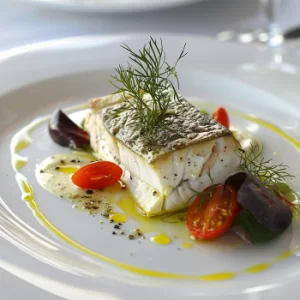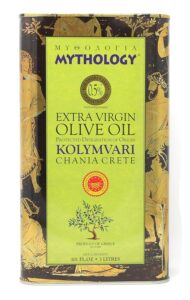Did you know that a staggering 3.5 million kilograms of Greek Halloumi Cheese are consumed worldwide every year? This traditional Cypriot semi-hard cheese has captured the hearts and palates of cheese enthusiasts across the globe. Hailing from the sun-drenched island of Cyprus, halloumi is a unique and versatile dairy delight that deserves a place in every cheese lover’s repertoire.
Key Takeaways
- Halloumi is a traditional Cypriot semi-hard cheese made from a blend of goat and sheep milk, with some producers adding cow milk.
- It is known for its elastic and firm texture when raw, which becomes softer when cooked.
- Halloumi is a good source of protein and calcium, making it a nutritious addition to your diet.
- The unique flavor and texture of halloumi have made it a popular ingredient in a variety of dishes, from savory to sweet.
- Grilling or frying halloumi enhances its natural flavors and provides a delightful textural contrast.
What is Greek Halloumi Cheese?
Origin and Production of Halloumi
Halloumi is a semi-hard, unripened brined cheese that originated in Cyprus during the medieval Byzantine period. It is the national cheese of Cyprus and is made from a blend of goat’s, sheep’s, and sometimes cow’s milk. Halloumi is unique in its preparation, as it does not involve the use of any acid or acid-producing bacteria, which gives it a high melting point that allows it to be easily fried or grilled.
Traditionally, halloumi was wrapped in fresh mint leaves to help preserve it, but today, commercially produced Greek Halloumi Cheese often has mint added for flavor. The process of halloumi production involves heating the milk, curdling it, and then heating the curds again to form the distinctive texture and flavor.
| Characteristic | Cypriot halloumi | Other Halloumi Cheeses |
|---|---|---|
| Milk Source | Goat and sheep milk | May include cow milk |
| Texture | Firm and squeaky | Softer texture |
| Flavor | Slightly salty and tangy | Milder flavor |
| Preservation | Traditionally wrapped in mint leaves | May not use mint leaves |
The traditional Greek Halloumi Cheese production process and the use of specific milk sources contribute to the unique characteristics that make Cypriot halloumi a beloved and distinctive cheese.
Best Greek Cheese: Exploring the Variety of Cheese in Greece
Unique Characteristics of Greek Halloumi Cheese
Greek Halloumi Cheese is renowned for its distinct flavor and texture profile. With a slightly tangy and salty taste, this traditional Cypriot cheese boasts a spongy and elastic consistency that sets it apart from other varieties. The signature “squeak” heard when biting into halloumi is a result of the specific protein and rennet used in its production process.
When raw, halloumi has a firm and elastic feel, but its texture transforms when cooked. As the cheese is heated, it becomes softer and more pliable, making it an ideal ingredient for grilling, frying, or baking. This versatility has contributed to the growing popularity of Greek Halloumi Cheese among culinary enthusiasts worldwide.
Traditionally, Halloumi is enjoyed in a variety of ways, both raw and cooked. It is often served alongside refreshing beverages like cold beer, wine, or the Cypriot spirit zivania, providing a delightful contrast to the cheese’s halloumi flavor and halloumi texture.
| Characteristic | Description |
|---|---|
| Flavor | Slightly tangy and salty |
| Texture (Raw) | Firm and elastic |
| Texture (Cooked) | Softer and more pliable |
| Signature Feature | Distinctive “squeak” when eaten |
“The unique characteristics of Greek Halloumi Cheese, from its tangy flavor to its spongy texture, make it a versatile and beloved ingredient in Cypriot and global cuisine.”
Greek Halloumi Cheese: A Versatile Ingredient
Greek halloumi cheese is a culinary delight that goes beyond its traditional Cypriot roots. This unique and flavorful cheese is becoming increasingly popular worldwide, thanks to its versatility and ability to elevate a variety of dishes. From salads and sandwiches to grilled specialties and creative bowls, halloumi offers a delightful touch that can transform any meal.
Traditional Ways of Enjoying Halloumi
In Cyprus, the birthplace of halloumi, this cheese is celebrated for its diverse applications. One classic pairing is halloumi with watermelon, a refreshing combination that perfectly balances the cheese’s saltiness with the fruit’s sweetness. Halloumi is also a favorite addition to sandwiches, where it’s often layered with crisp cucumbers and juicy tomatoes for a satisfying and flavor-packed bite.
Beyond these traditional preparations, halloumi shines in a variety of other dishes. Grated halloumi can add a delightful texture and salty punch to pasta dishes, while fried halloumi is a breakfast staple, often served alongside eggs, cucumbers, tomatoes, and traditional Cypriot sausages. The possibilities are endless when it comes to incorporating this versatile cheese into your culinary adventures.
“Grilled halloumi is a personal favorite, especially when drizzled with a touch of honey or lemon for a delightful sweet-savory contrast.”
Whether you’re looking to add a Mediterranean twist to your salads, sandwiches, or even breakfast plates, Greek halloumi cheese is a must-have ingredient that will elevate your culinary experiences.
Grilling and Frying Halloumi
Halloumi, the beloved cheese from Cyprus, is renowned for its exceptional heat tolerance, making it a delight to grill or fry. When subjected to the sizzling flames or hot oil, this semi-hard cheese develops a mesmerizing crispy exterior while maintaining its signature soft, spongy interior.
The process of grilling or frying halloumi enhances its unique flavor profile, allowing the cheese to take center stage in a variety of culinary creations. Whether you prefer grilled halloumi or fried halloumi, the result is a delectable experience that tantalizes the taste buds.
Grilling Halloumi
Grilling halloumi is a simple yet effective way to bring out the best in this versatile cheese. The high heat sears the exterior, creating a delightful crust that gives way to the soft, creamy interior. To grill halloumi, simply slice the cheese into thick pieces and place them directly on a preheated grill or grill pan. Cook for a few minutes on each side, turning occasionally, until the cheese develops those sought-after grill marks.
Fried Halloumi
For those who prefer a more indulgent how to cook halloumi experience, frying is the way to go. The process of frying halloumi results in a golden-brown crust that encases the melty, savory interior. To achieve this, simply heat a tablespoon of oil in a skillet over medium-high heat and carefully add the halloumi slices. Fry for 2-3 minutes per side, or until the cheese is crispy and golden.
Whether grilled or fried, halloumi can be enjoyed on its own or paired with a variety of accompaniments. Try drizzling it with lemon juice, sprinkling it with fresh herbs, or serving it alongside roasted vegetables for a truly delightful experience.
| Grilled Halloumi | Fried Halloumi |
|---|---|
| Develops a crispy exterior with a soft, spongy interior | Achieves a golden-brown crust with a melty, savory interior |
| Requires minimal preparation, just slice and grill | Involves frying in a skillet with oil to achieve the desired texture |
| Imparts a slight char and smoky flavor from the grill | Produces a richer, more indulgent texture and flavor |
“Grilled or fried, halloumi is a culinary delight that showcases the versatility of this remarkable cheese.”
Modern Interpretations of Halloumi
As the popularity of Greek halloumi cheese has soared beyond its Cypriot roots, innovative chefs and home cooks have discovered fascinating new ways to incorporate this versatile ingredient into their culinary creations. While the traditional methods of frying or grilling halloumi remain beloved, modern interpretations showcase the cheese’s remarkable adaptability, allowing it to shine in a diverse array of global dishes.
One increasingly popular trend is the incorporation of halloumi into fresh and vibrant halloumi salads. The squeaky texture and salty-yet-tangy flavor of the cheese pairs beautifully with crisp greens, juicy tomatoes, and a zesty dressing, creating a harmonious balance of flavors and textures. For a heartier option, halloumi can be grilled or pan-fried and tossed with roasted vegetables, chickpeas, and a drizzle of tahini for a nutrient-dense and satisfying meal.
Beyond salads, chefs have also discovered the joys of halloumi fries – thick-cut slices of the cheese that are breaded and fried until golden brown on the outside and delightfully soft and melty within. Served with a range of dipping sauces, from tangy tzatziki to spicy harissa, these halloumi fries have become a beloved snack or side dish.
For those seeking a more substantial meal, halloumi kebabs offer a delightful solution. Cubes of the cheese are skewered alongside an assortment of grilled vegetables, such as zucchini, bell peppers, and onions, creating a vibrant and flavorful dish that can be enjoyed on its own or served over fluffy rice or quinoa.
Finally, the versatility of halloumi has also found its way into the realm of burgers, with halloumi burgers emerging as a popular vegetarian or flexitarian option. The salty, grilled cheese patty adds a unique and satisfying texture, while complementary toppings like tomatoes, avocado, and a tangy yogurt-based sauce elevate the humble burger to new heights.
As halloumi’s global popularity continues to grow, the culinary possibilities are truly endless. From salads and fries to kebabs and burgers, this versatile Cypriot cheese has become a beloved ingredient in modern kitchens around the world, showcasing its ability to seamlessly integrate with a wide array of flavors and culinary traditions.
Storing and Preserving Greek Halloumi Cheese
Proper storage and preservation are key to enjoying the unique flavors and textures of Greek halloumi cheese. With a few simple tips, you can keep this versatile ingredient fresh and ready to use for a variety of delectable dishes.
One of the great things about halloumi is its longevity. When unopened, the cheese can be stored for up to a year. Once the package is opened, however, you’ll want to store the halloumi in an airtight container filled with brine, which will help preserve its freshness for up to two weeks in the refrigerator.
If you prefer not to use brine, you can also wrap the halloumi tightly in waxed paper, parchment paper, or cheese wrap. Just be sure to change the wrapping each time you unwrap the cheese for optimal freshness.
For longer-term storage, halloumi can be frozen for up to six months. To freeze, simply wrap the cheese tightly in plastic wrap and aluminum foil, ensuring there is no air exposure. When you’re ready to use the frozen halloumi, let it thaw in the refrigerator overnight before incorporating it into your favorite recipes.
No matter how you choose to store or preserve your Greek halloumi cheese, the key is to keep it well-protected from air and moisture. With a little care, you can enjoy the unique taste and texture of this beloved Cypriot cheese for weeks or even months to come.
Where to Buy Authentic Greek Halloumi Cheese
Finding authentic Greek halloumi cheese has never been easier. This Cypriot delicacy can now be found in a variety of locations, from major grocery stores to specialty markets and Middle Eastern or Greek shops. When selecting your halloumi, be sure to check the label to ensure it was produced in Cyprus, as this is the only way to guarantee the cheese’s true authenticity.
Halloumi’s growing popularity has made it widely available in many countries around the world. Cheese enthusiasts can now discover the unique flavors and textures of this Cypriot specialty with ease. Whether you’re shopping at your local grocery store or seeking out a specialty retailer, authentic Greek halloumi cheese is within reach.
To savor the best of what this versatile cheese has to offer, be sure to look for the “Product of Cyprus” label when making your purchase. This simple step ensures you’re enjoying the real deal, straight from the source of this beloved Cypriot culinary treasure.
FAQ
What is Greek Halloumi Cheese?
What are the unique characteristics of Greek Halloumi Cheese?
How is Greek Halloumi Cheese traditionally enjoyed?
How can Greek Halloumi Cheese be cooked?
How can Greek Halloumi Cheese be stored and preserved?
Where can authentic Greek Halloumi Cheese be purchased?











Welcome to “Cooking with Greek People,” your go-to YouTube channel for discovering the rich, flavorful, and diverse world of Greek cuisine! Whether you’re a seasoned chef, a home cook, or someone who just loves great food, our channel is designed to bring the heart of Greece into your kitchen.
Author: Bob
With over 20 years in Bioinformatics and AI in Molecular Diagnostics, Bob Stavrou advises BiCos, focusing on authenticating OLIVE OIL DNA. He's also a passionate contributor to YouTube Cooking with Greek People and appeared on Greek TV show Savvatokiriako Me Ton Manesi, bridging science and culinary arts. Watch it on Alpha TV.





